Puglia isn’t just a destination — it’s a rhythm.
It’s the light shifting over white stone, the scent of the sea in the morning, the slow voices filling the squares at dusk.
It’s that feeling of being at home, even when you’re far away.
Here, we’ve gathered some of the places we love most — villages suspended between sky and olive trees, crystal-clear waters, simple yet extraordinary food.
Take your time discovering them, the way you do with beautiful things: unhurried, with an open heart… and maybe a gelato in hand.
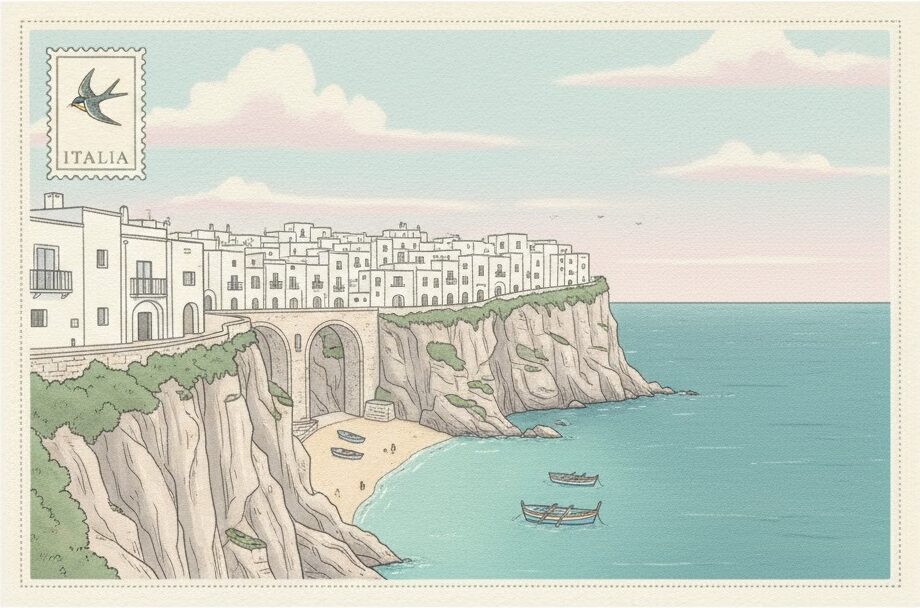
Polignano a Mare
One of the most photographed places in Puglia — and one that still manages to surprise you in person.
The town clings to the cliffs, its houses hanging over the void.
From the terraces, you can watch the sea moving below you, dark and strong even under full sun.
In the alleys, short phrases appear on the walls — fragments of thoughts left behind by someone who didn’t want to be forgotten.
And at the edge of it all, Modugno stands with his arms open to the blue, a reminder that here, sky and sea are the same thing.
🍽️Where to eat: Pescaria (the famous fish sandwich)
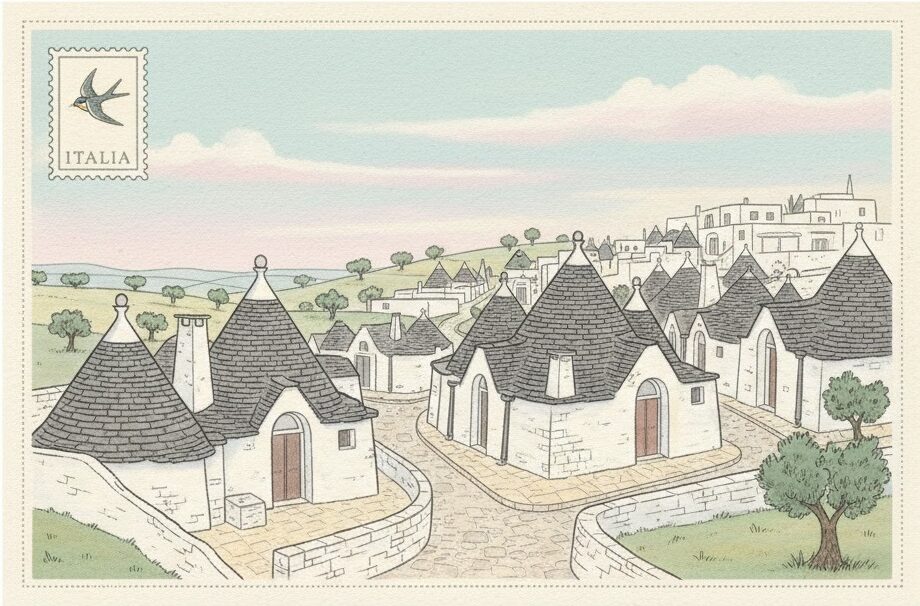
Alberobello
Inevitably touristy — everyone thinks they know it.
But seeing it for yourself is different: the trulli look like they were drawn by someone with time and patience.
The streets twist between whitewashed houses, and the smell of warm stone fills the air.
At night, the town empties out, leaving only soft light and a few voices echoing off the conical roofs.
That’s when you realize that behind the postcards and souvenir shops, there’s still a real place — old, quiet, and breathing at its own pace.
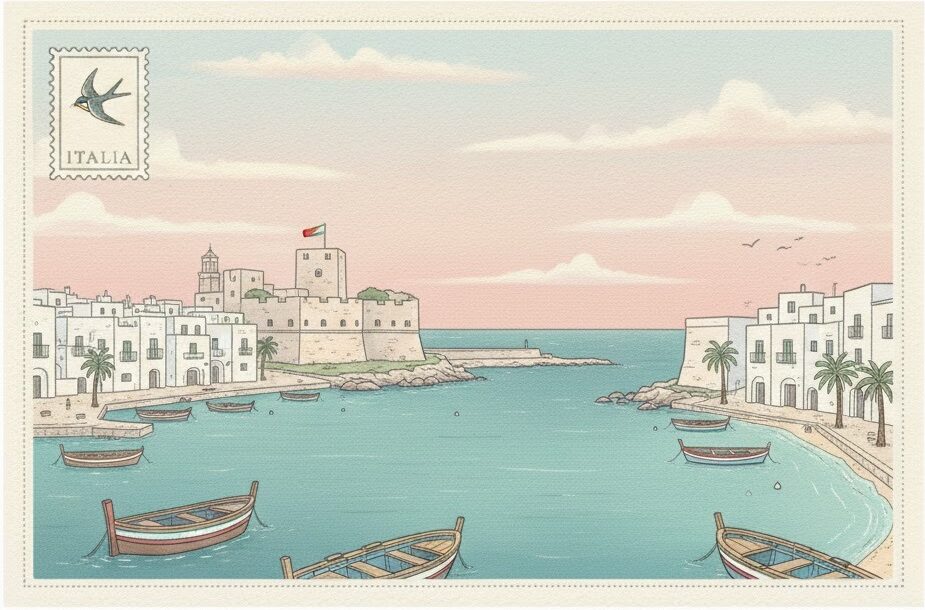
Monopoli
A working port, not just a postcard view.
Fishing boats return early in the morning, and the smell of salt mixes with the coffee from the bars along the pier.
The old town is a maze of pale stone and colored doors, every turn ending in a courtyard or a glimpse of sea.
In the evening, the squares fill up slowly — people dine late, talk softly, listen to the waves against the walls.
Monopoli is the sea, not as a view but as a way of living.

Cisternino
Its name comes from an ancient cistern built to collect water on this hill.
Maybe that’s why the town feels like it holds on to things — the light, the scents, the voices.
Around it, trulli dot the landscape among olive trees and dry-stone walls.
In the center, life moves slowly between white lanes and butcher-grills where you choose your meat and wait while it cooks.
At night, smoke and laughter fill the streets, and no one seems in a hurry to leave.
Cisternino isn’t a place to visit, but to pass through — like a conversation you don’t want to end.
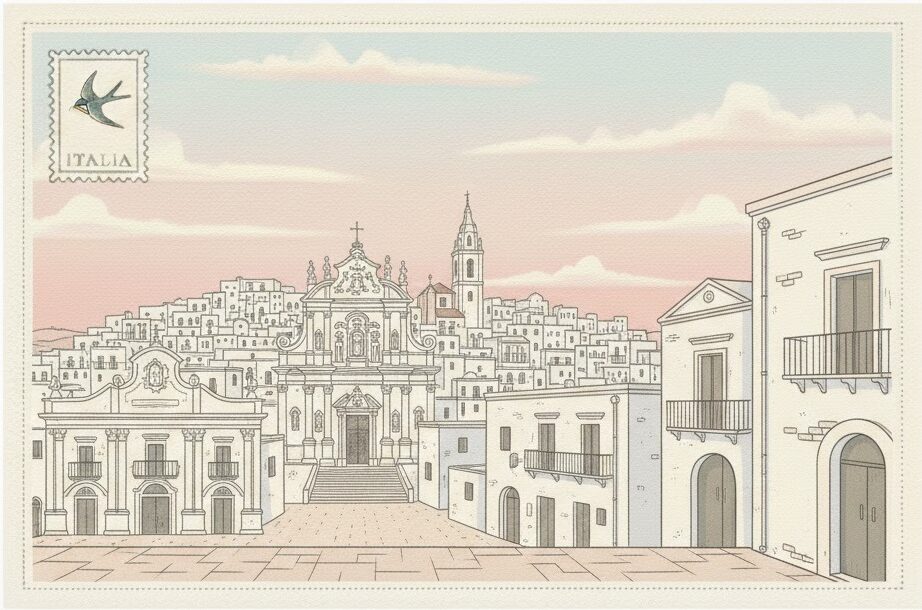
Martina Franca
The largest, the most elegant — unmistakably itself.
Baroque architecture is everywhere: wrought-iron balconies, carved portals, squares that open unexpectedly.
There’s a city rhythm here, lively and full of voices bouncing beneath the arches.
Walking through the center, you feel a different kind of energy — less picture-perfect, more lived-in, full of stories and habits.
Martina Franca doesn’t charm with calmness but with presence.

Locorotondo
The name means “round place,” and it makes sense the moment you arrive. The town forms a ring of white houses, lined up with almost obsessive care.
From above, it looks hand-drawn — a perfect circle in the middle of the Valle d’Itria.
Inside, there’s a rare sense of order: quiet streets, aligned flowerpots, doors polished each morning.
From the terraces, your eyes drift over olive trees and trulli, toward a horizon melting in the heat.
Locorotondo doesn’t need movement — it is stillness, turned to stone
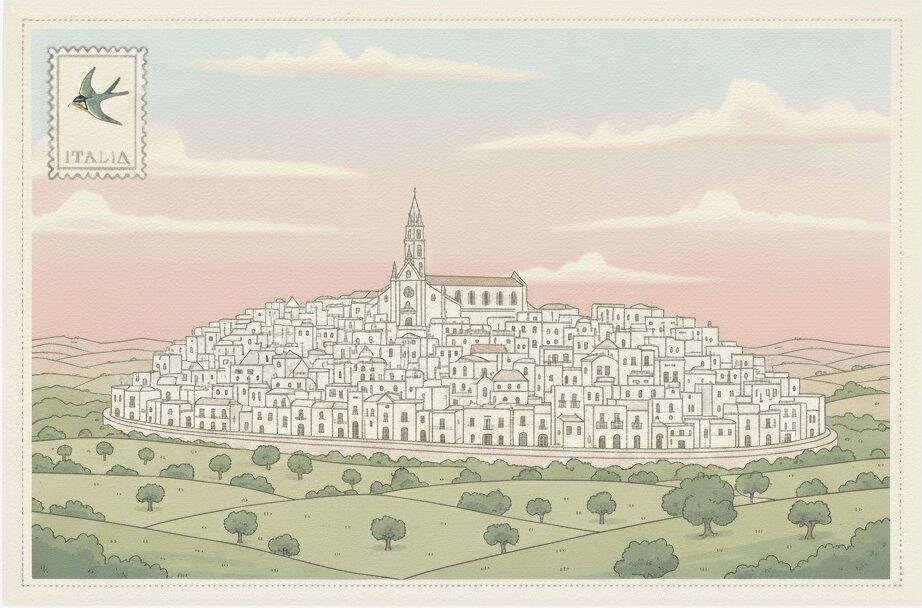
Ostuni
Its fame precedes it: white and bright, rising above the hill and visible from miles away.
From a distance, it looks like a cloud of stone, motionless under the sun.
Inside, it’s a labyrinth of slopes and curves, with sudden openings toward the sea.
The air smells of lime and salt, and each step echoes off the walls like something ancient.
In recent years, between tucked-away restaurants and bars, Ostuni has become a gourmet destination — lively, curious, and still entirely itself.
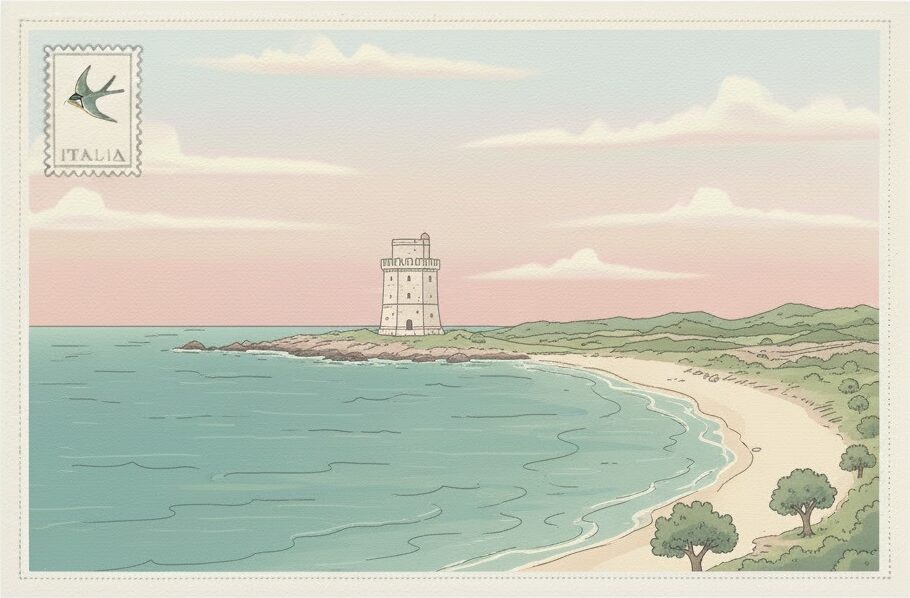
Torre Guaceto
Those who look for the most beautiful sea will find it here, far from beach clubs and rows of umbrellas.
A protected reserve where sand meets dunes and wild herbs, and the water shifts color with the light.
No bars, no music — just wind, salt, and the sound of cicadas.
You walk a while to reach it, but each step strips something unnecessary away.
Torre Guaceto is the sea as it was before tourism — and maybe how it should always be.
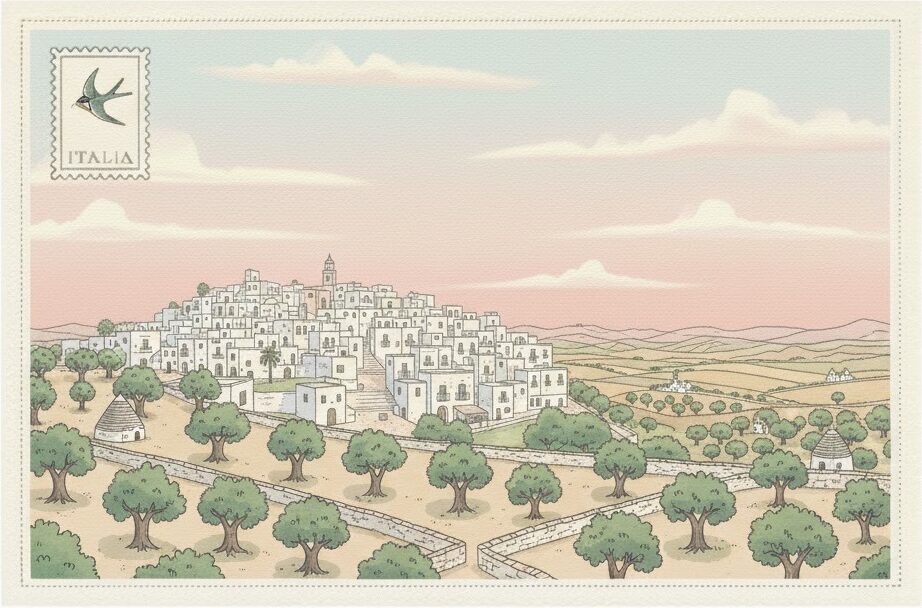
Fasano
Known across Italy for its ceramics, still shaped by hand in workshops throughout the old town.
It’s not the first place people think to stop, but it deserves a closer look.
The streets smell of clay and warm kiln, and through open doors you catch glimpses of hands turning, glazing, painting.
Each piece is unique, imperfect in the right way — like everything made from a genuine gesture.
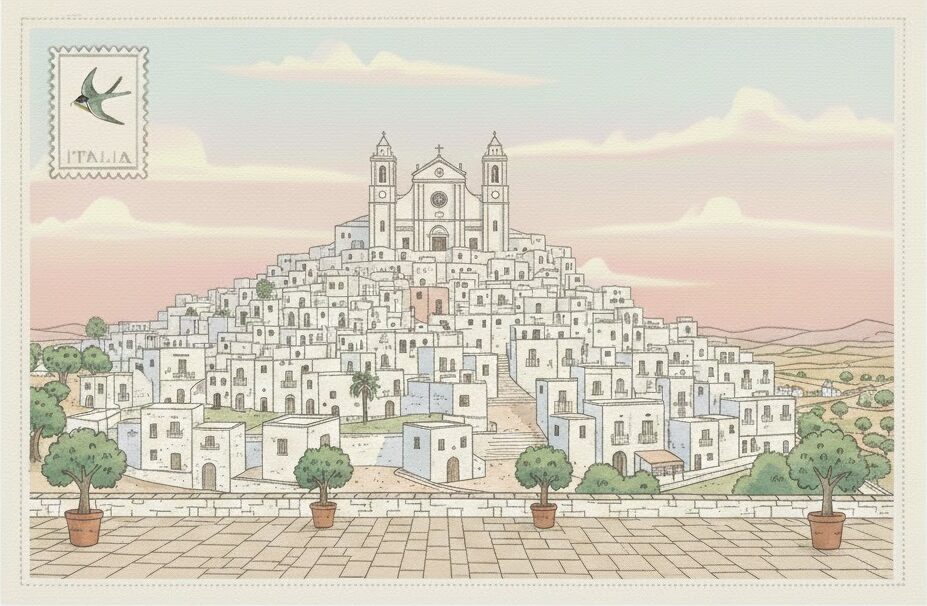
Ceglie Messapica
Further inland, quieter, and deeply rooted.
Ceglie is known as one of Puglia’s food capitals — sit down to eat and you’ll understand why.
The streets of the old town are narrow and bright, with blue doors and pots of basil on the windowsills.
There’s a different rhythm here: less tourism, more daily life — time finding its natural pace again.